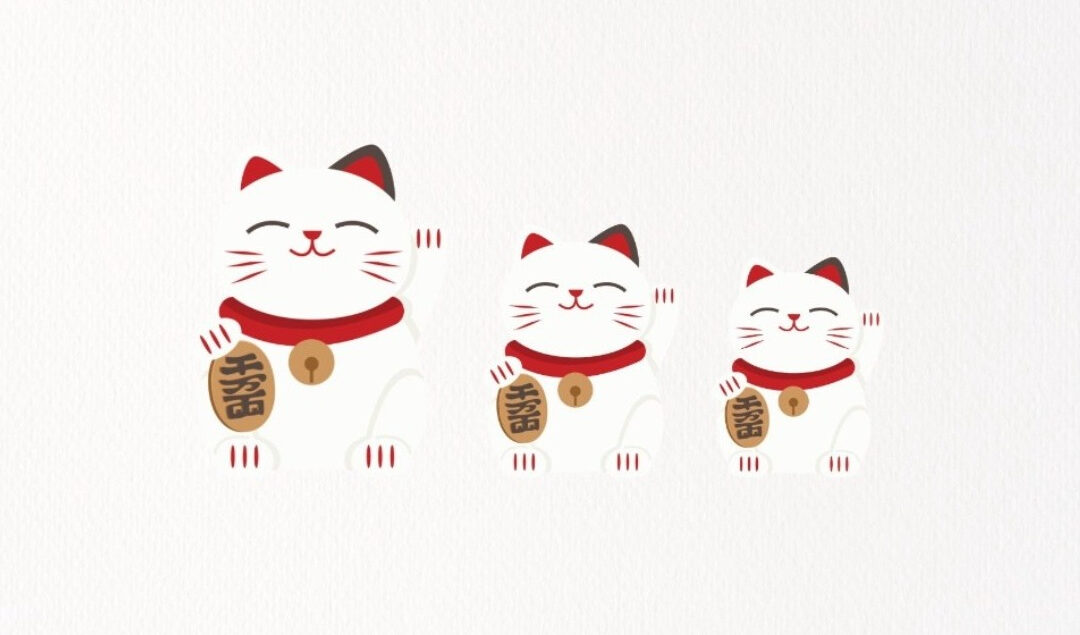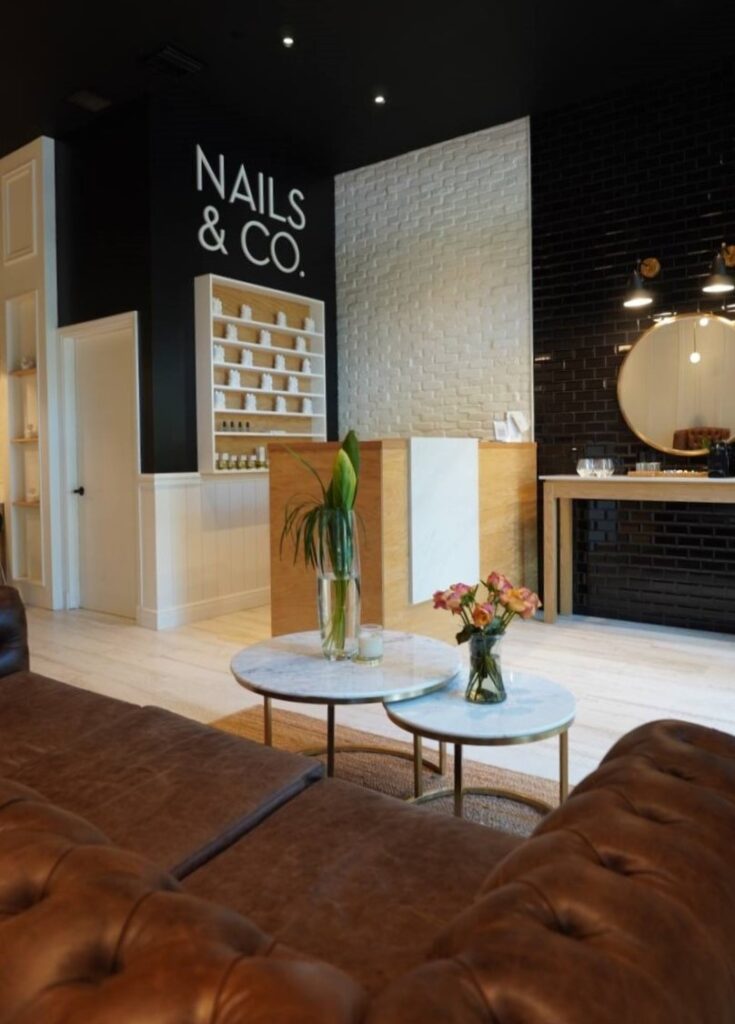Design Short Stories: Maneki Neko
We’re thrilled to introduce a new section on the blog where we’ll share brief histories and interesting facts about techniques, materials, decorative objects, furniture, and everything related to design and architecture.
As we promised in our previous post on Nails & Co today we’re bringing you more details about the fortune cats known as Maneki Neko (招き猫).
While many people believe they are Chinese, they actually have a Japanese origin. Maneki (招き) means “invitation” and Neko (猫) means “cat,” so we can translate it as “cat that invites you in” or “beckoning cat.” These iconic statues are believed to attract prosperity, success, and money, which is why they are often seen in retail stores.
When choosing a Maneki Neko for commercial interior design, it’s essential to consider the specific business and its target audience. For example, a company catering to children may choose a Maneki Neko figure with kittens. A business aiming for a sophisticated ambiance may opt for a black Maneki Neko. The best choice for Nails & Co, a renowned beauty company, was the white one.
Let’s take a closer look at their characteristics:
Maneki Neko are often typically depicted as bobtail cats, a short-tailed breed native to Asia.
The bell collar serves the purpose of protection, to ward off evil spirits.
If the left paw is raised: it attracts customers.
If the right paw is raised: it attracts prosperity and money.
If both paws are raised: it signifies protection of the establishment or home. This is less common.
They may have oval-shaped coins in their right paw. The inscriptions on these coins can represent different values or phrases. For example, Sen man ryo (千万両). Ryo was an ancient Japanese currency, and 10 million ryo was considered a great fortune at that time. This inscription symbolizes wealth and prosperity. Other words or phrases you might find include:
Kai un (開運): Meaning “better fortune.”
Fu ku (福): Meaning “luck,” “blessings,” and “happiness.”
Sho bu (招福): Meaning “attracting good fortune” in Japanese.
Sen kyaku man mai (千客萬来): Meaning “may a thousand customers come” in Japanese.
Colors also have their meanings:
White: Happiness and positive things. It is often said that a white Maneki Neko will bring good luck to its owner in all aspects of life.
Green: Success and luck in academics. It is the best choice for those who want to ask for good luck in exams or in the search for a new job.
Pink: To improve relationships or find love.
Black: It is a symbol of protection against evil and misfortune. A black Maneki Neko is a good choice for people who want to ward off negative energy.
Blue: Helps fulfill dreams related to the professional sphere.
Red: Used to request good health.
Gold: To improve finances and attract wealth. It is more associated with the Chinese version.
What is the origin of Maneki Neko?
Among the theories about the origin of this amulet, the most widespread one is associated with the Gotokuji temple in the Setagaya neighborhood of Tokyo. Legend has it that in the 17th century (Edo period), the temple was in a state of poverty and inhabited by an elderly monk whose only companion was a tricolor cat. One afternoon, Li Naokata, a wealthy feudal lord, found himself caught in a storm while hunting and sought refuge under a tree, believing he would be safe. But here’s the remarkable part: the ruler noticed that the cat was beckoning him with one of its paws, inviting him to come closer to the temple. Without hesitation, he followed the invitation, and just at that moment, lightning struck the tree directly.
In gratitude for the cat that had saved his life, Li Naokata decided to honor her by making her the patron of the temple. He also donated rice fields and took care of the temple’s repairs, transforming it into a place of great prosperity.
In the present day, people continue to place their various-sized figurines to ask for and express gratitude to the deities for their good fortune. Also the traditional ema wooden tablets (remember? We saw them in the Paperfish post) with illustrations of cats. Don’t forget to click on the pictures to enlarge them.
The Japanese people’s affinity for cats is evident in the numerous ways they are depicted in art, literature, and folklore, as well as in the popularity of Maneki Neko figures and the more recent cat cafes. Maneki Neko even has its own official celebration day: September 29th, a date that, when pronounced in Japanese, sounds like “kuru fuku,” meaning “good fortune to come.”
Don’t forget to pay attention the next time you come across a Maneki Neko. That cat greeting you might be inviting you to a future full of good luck 😉

















